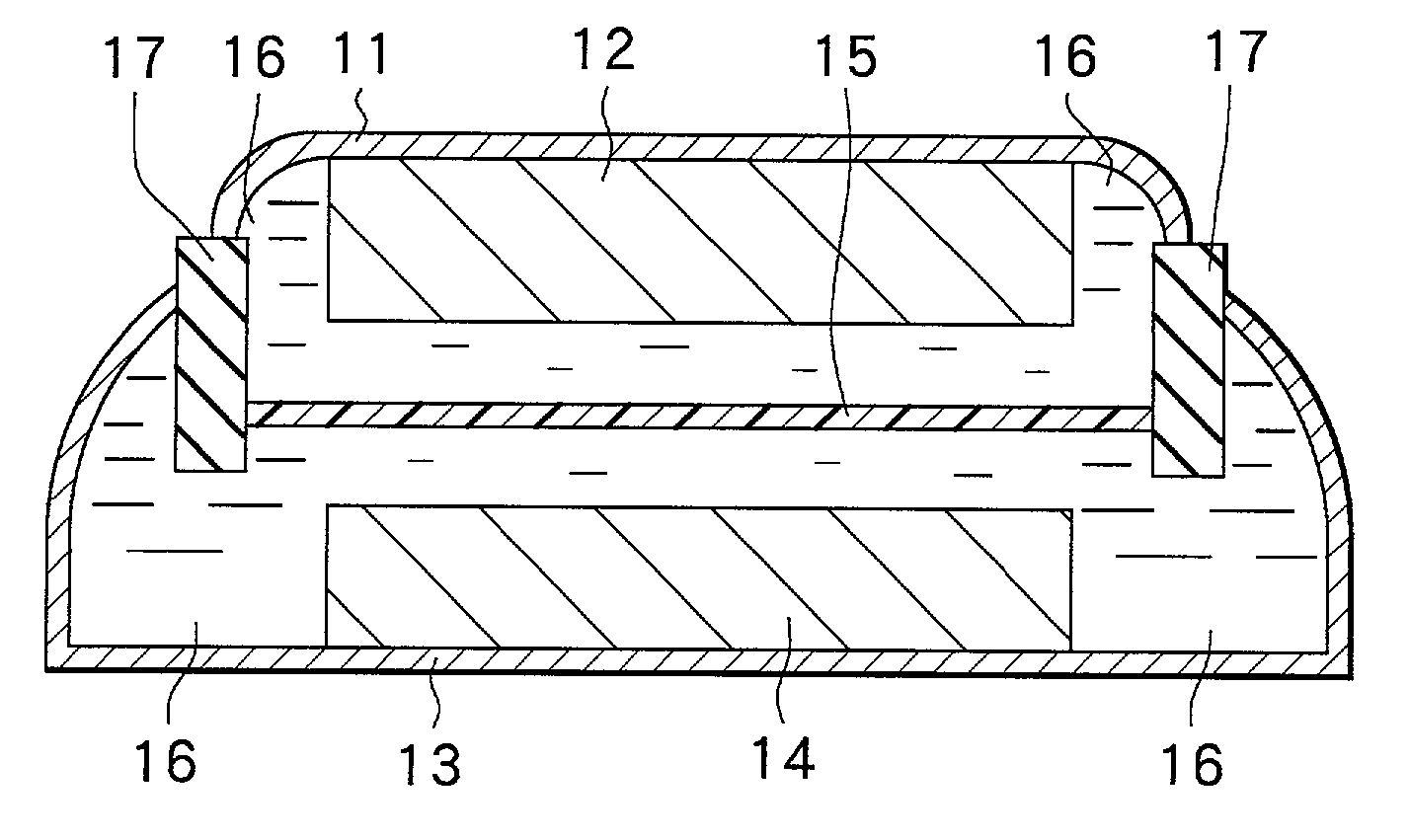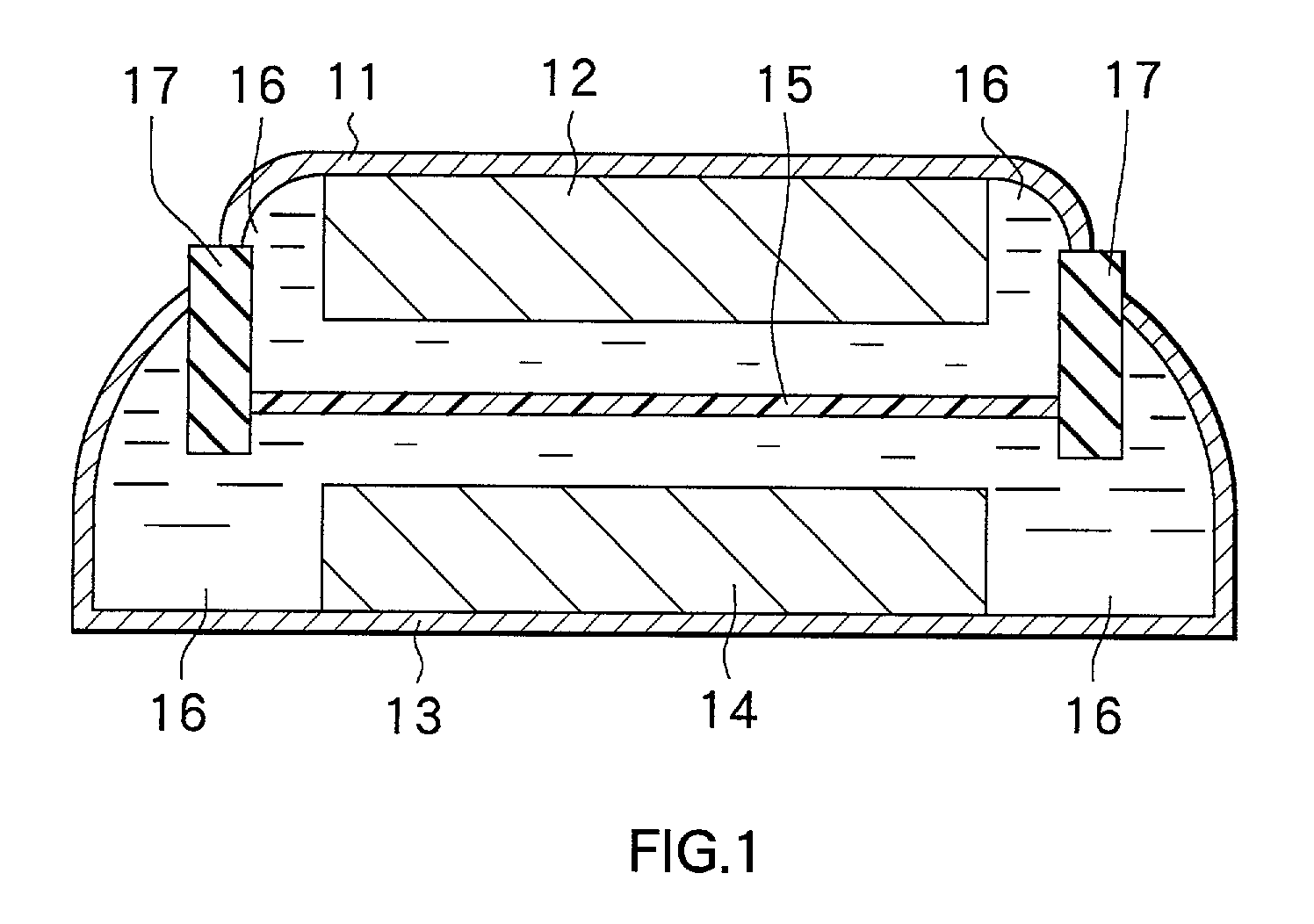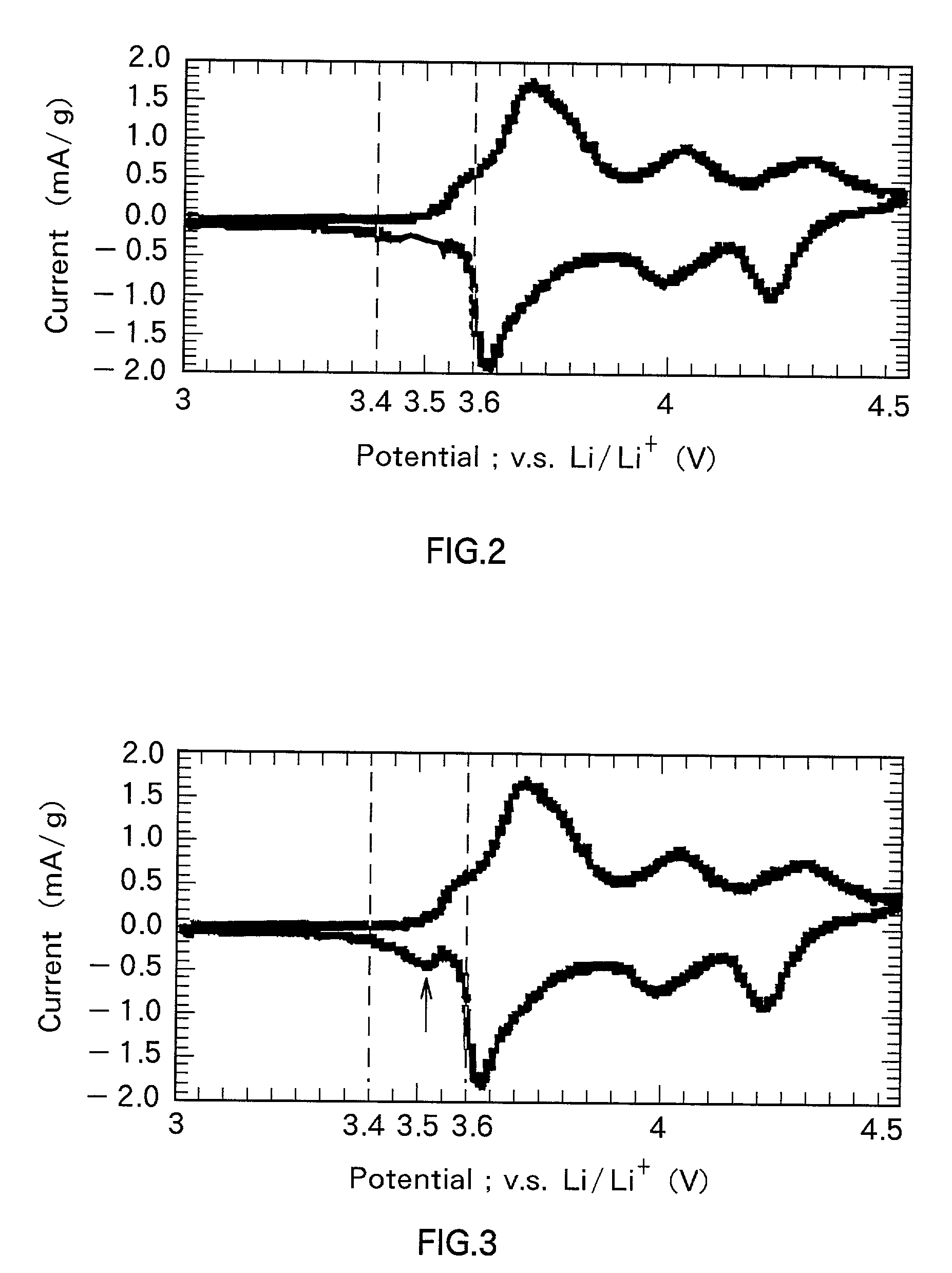Positive electrode material and secondary battery using the same
- Summary
- Abstract
- Description
- Claims
- Application Information
AI Technical Summary
Benefits of technology
Problems solved by technology
Method used
Image
Examples
example 2
[0070] In the example, lithium hydroxide hydrate of purity higher than 99.0%, nickel oxide of purity higher than 99.5% and cobalt oxide of purity higher than 99.0% were prepared and mixed so that the mole ratio of lithium, nickel, and cobalt became Li:Ni:Co=1.0:0.9:0.1. The mixture was then heated at 900.degree. C. in the same atmosphere as that of Example 1. Thereby, black powders containing mainly a lithium nickel cobalt composite oxide were obtained as a positive electrode material.
[0071] The composition of the obtained lithium nickel cobalt composite oxide was analyzed by powder X-ray diffraction in a manner similar to Example 1. The result is shown in Table 2. As understood from Table 2, the mole ratio of lithium, nickel and cobalt was Li:Ni:Co=1.00:0.90:0.10. It was not found that the mole ratio Li:(Ni+Co) of lithium to both nickel and cobalt in the lithium nickel cobalt composite oxide was non-stoichiometric.
[0072] After preparing a secondary battery by using the obtained pos...
PUM
 Login to View More
Login to View More Abstract
Description
Claims
Application Information
 Login to View More
Login to View More - R&D
- Intellectual Property
- Life Sciences
- Materials
- Tech Scout
- Unparalleled Data Quality
- Higher Quality Content
- 60% Fewer Hallucinations
Browse by: Latest US Patents, China's latest patents, Technical Efficacy Thesaurus, Application Domain, Technology Topic, Popular Technical Reports.
© 2025 PatSnap. All rights reserved.Legal|Privacy policy|Modern Slavery Act Transparency Statement|Sitemap|About US| Contact US: help@patsnap.com



